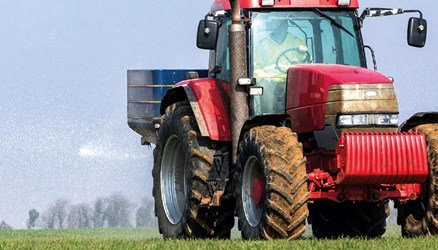- Home
- Knowledge library
- Nitrogen fertiliser adjustment calculator for cereals and oilseeds
Nitrogen fertiliser adjustment calculator for cereals and oilseeds
Accounting for fertiliser and grain/oilseed prices, it calculates the adjustment in the amount of nitrogen to apply to cereals and/or oilseeds crops.
Based on RB209 fertiliser guidance, use this tool suggests potential changes to your typical farm nitrogen rates. Accounting for fertiliser and grain/oilseed prices, it calculates the adjustment in the amount of nitrogen to apply to cereals and/or oilseeds crops.
PLEASE NOTE: The nitrogen response equation in the calculator is currently being updated to accommodate N fertiliser prices above £1,300/t. Values above £1,300/t will currently return a invalid result.
Please be aware that the tool may not run on some old versions of Excel e.g. version 2007. If you have a older version please contact AHDB so that a member of staff can help put your figures in to the calculator.
Why did we develop this tool?
An energy crisis contributed to unprecedentedly high fertiliser prices in 2021. This led to a new ‘economic optimum’ – or the point at which the value of extra grain produced is not worth the cost of the extra nitrogen applied (break-even-ratio) – for nutrient management.
To account for higher prices, we commissioned a review to extended RB209 fertiliser price tables:
- By up to £2.50 per kilogram of nitrogen (equivalent to £863 per tonne of ammonium nitrate)
- By up to £350 per tonne for cereals and £700 per tonne for rapeseed (to account for stronger prices)
The tool is based on the revised figures.
How best to respond to costly fertiliser nitrogen for use in 2022 (research review)
How should farmers manage costly nitrogen fertilisers? (blog)
Latest RB209 update ‘on track’
What does the tool calculate?
For a specified crop, this tool calculates*:
- Cost of nitrogen fertiliser (£/kg)
- Break-even-ratio (kgs of grain required to pay for a kg of nitrogen fertiliser)
- An estimated change to nitrogen application* (kg/ha)
- An estimate of the effect on yield/income (£/ha)
- An estimated impact on nitrogen fertiliser costs (£/ha)
- Total nitrogen fertiliser product required for the specified crop area planted (t)
*Compared to your typical/recommended nitrogen rate. Estimates provided can guide decision making. However, local adjustments may be required to fit specific circumstances.
What figures (inputs) are required by the tool?
Each crop calculation is based on six figures:
- Crop type
- Fertiliser product price (£/t)
- Fertiliser product nitrogen content (%)
- Expected grain price (£/t)
- Typical/recommended nitrogen rate (kg/ha)
- Crop area planted (ha)
Frequently asked questions
When I click on 'Download resource' I am only able to view the calculator. How can I use the tool?
When you click on ‘Download resource’ from the AHDB website and the calculator opens up in viewing mode only, at the top of the screen there should be a button that says ‘Download file’. Click on this and you should then be able to click on or open the downloaded file.
Does the tool work out my recommended nitrogen application rates?
No. The calculator just works out the adjustment to apply to your nitrogen fertiliser rate. There are other apps and calculators available to calculate your recommended nitrogen application rate or use the RB209 publication. A link to RB209 can be found at the bottom of this page.
How do the nitrogen adjustment calculator and RB209 tables (4.21 & 4.28) for adjustments to nitrogen recommendations take into account expected yields?
RB209 recommendations for nitrogen applications to wheat, barley and oilseed rape already take expected yield into account. Adjustments for fertiliser and grain/seed prices are additional to and separate from adjustments for expected yield, and they do not depend on expected yield, or on soil nitrogen supply or soil type. Current RB209 recommendations are set at Break-Even Ratios of 5 for cereals and 2.5 for oilseeds (kgs of grain/seed to pay for 1 kg of N fertiliser).
As an example, the effect of increasing the Break-Even Ratio from 5:1 to 10:1 results in a similar reduction in optimum nitrogen rate for any cereal crop (wheat or barley) of about 50 kg N/ha and a similar reduction in yield of about 0.35 t/ha. It may seem surprising that crops yielding 8 and 12 t/ha have the same recommended change in nitrogen application rate and resulting change in yield. But this is because cereal and oilseed crops have a similar shaped nitrogen response curve near the economic optimum.
Webinar: How to manage high nitrogen fertiliser prices (four perspectives)
Video quick links
With the AHDB Nutrient management guide (RB209) acting as a foundation for discussions, our December 2021 webinar featured four expert perspectives:
How to use RB209 – James Holmes, AHDB
How to identify the optimum nitrogen rate (and when to apply fertiliser) – Pete Berry, ADAS
Fertiliser and grain prices (current and future) – Helen Plant, AHDB
Topics:
Sectors:
Tags:


